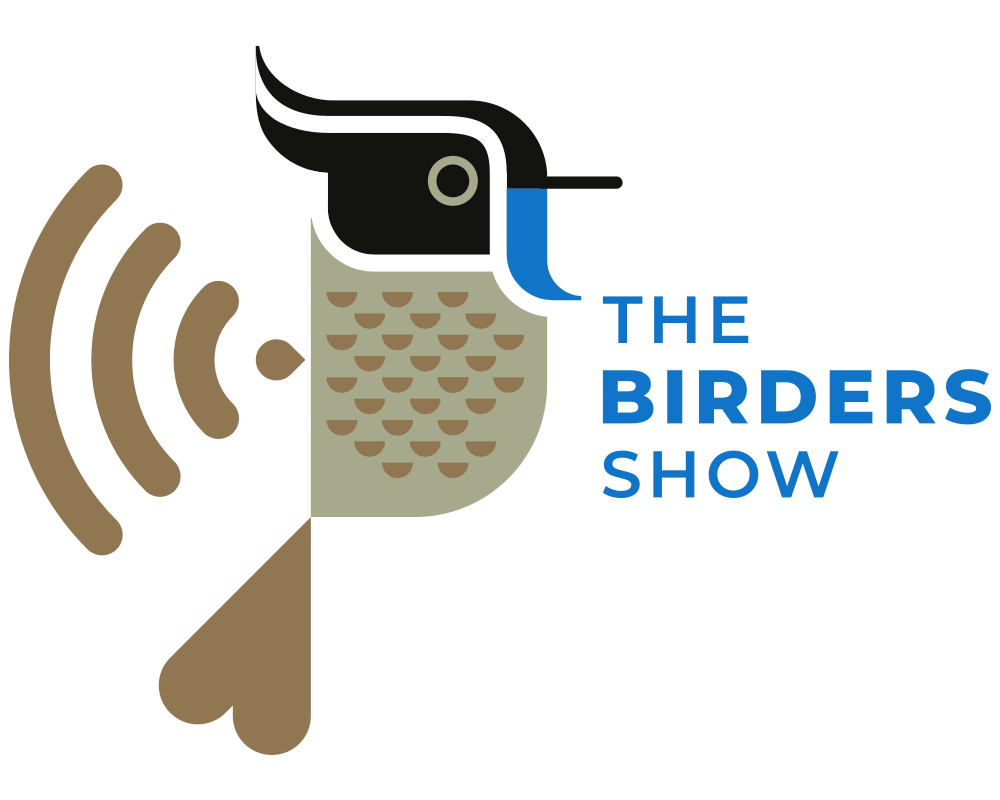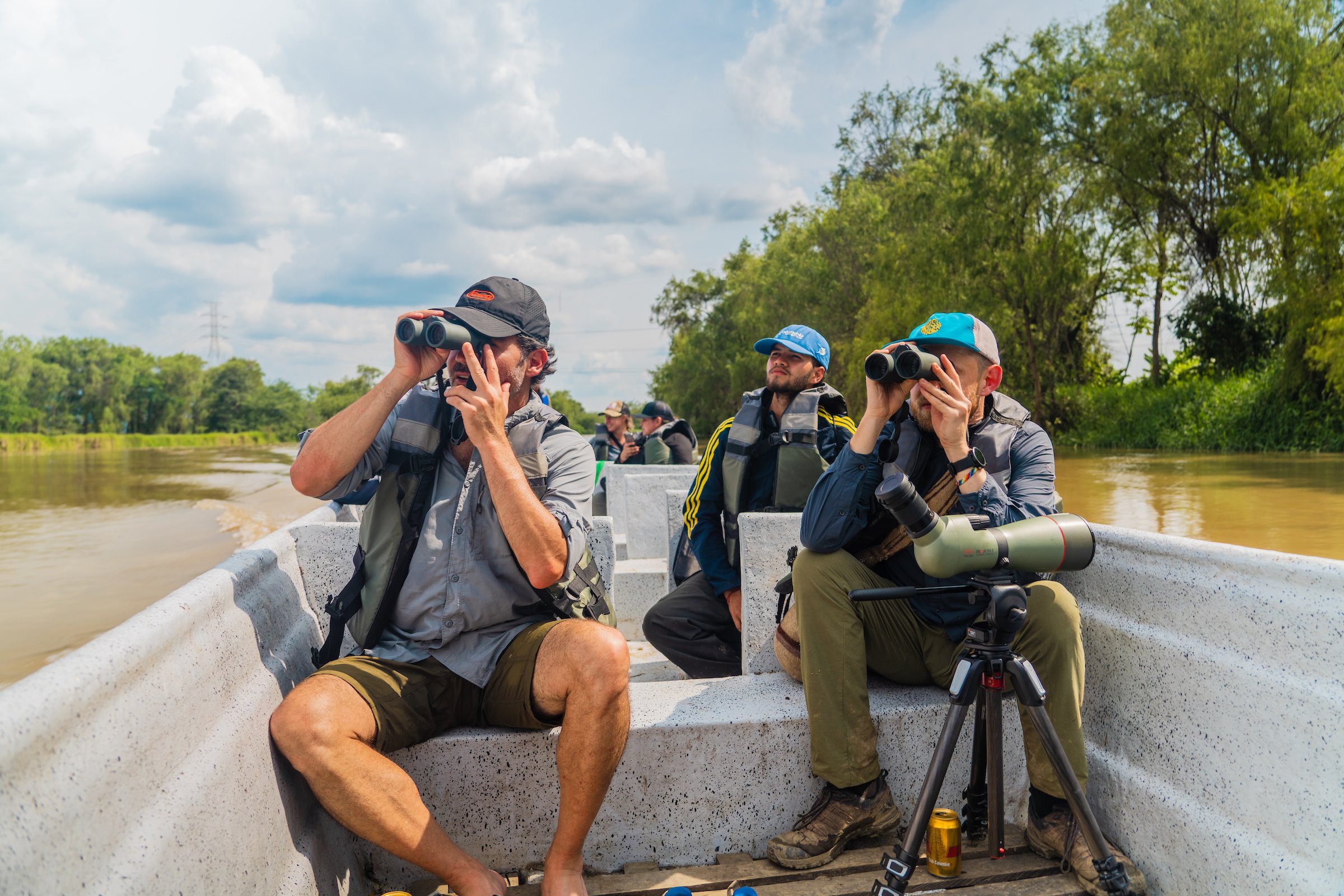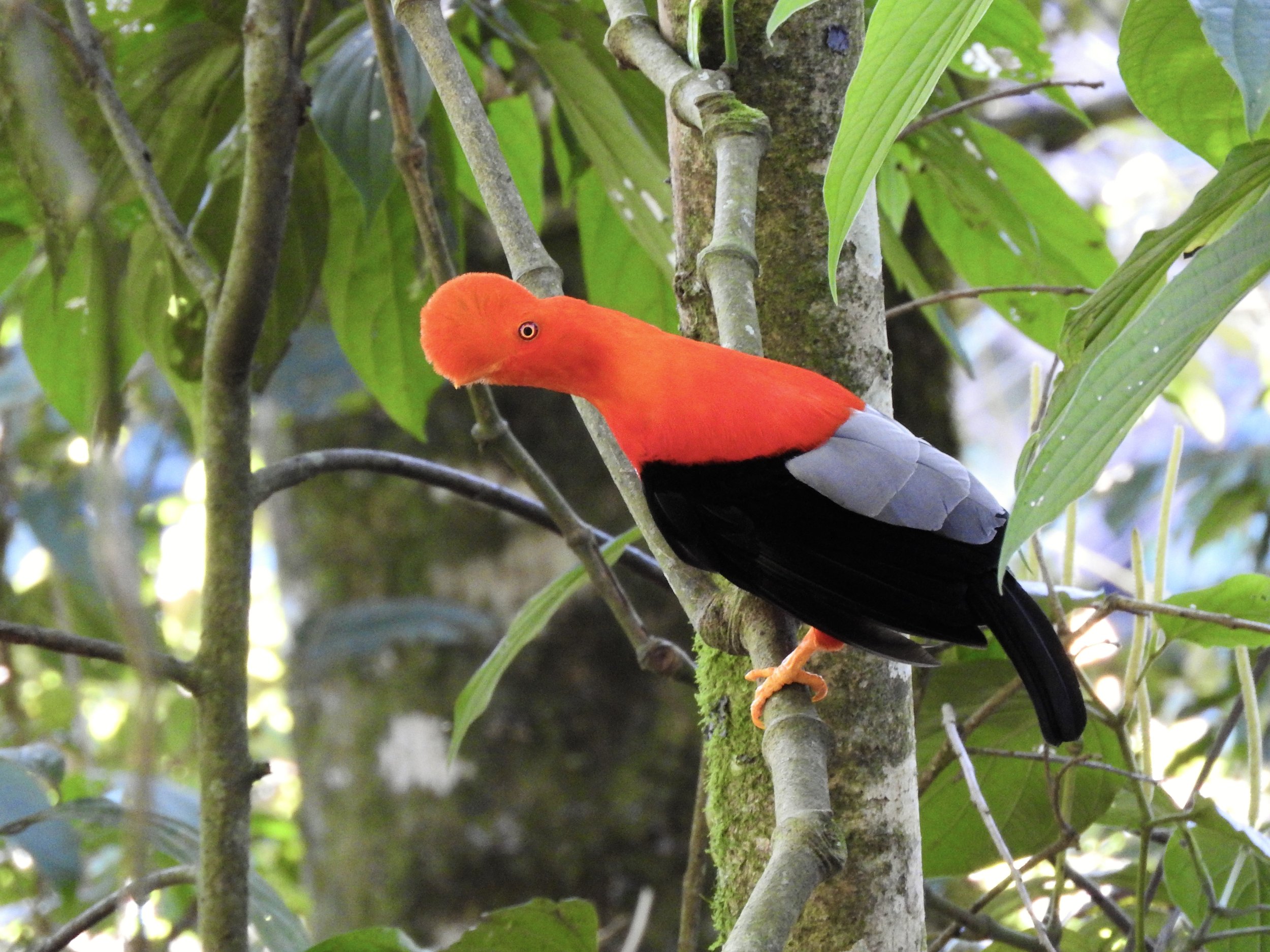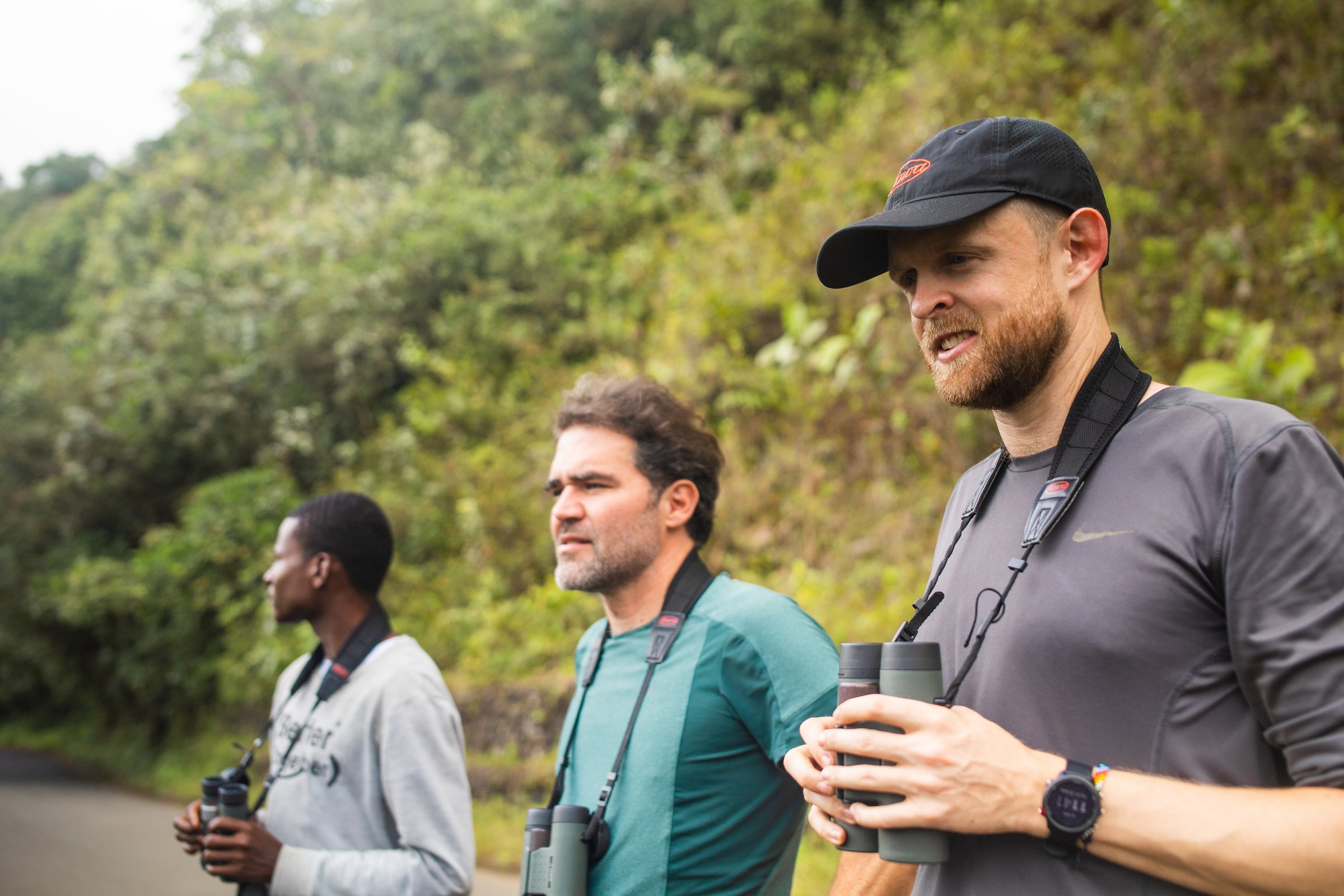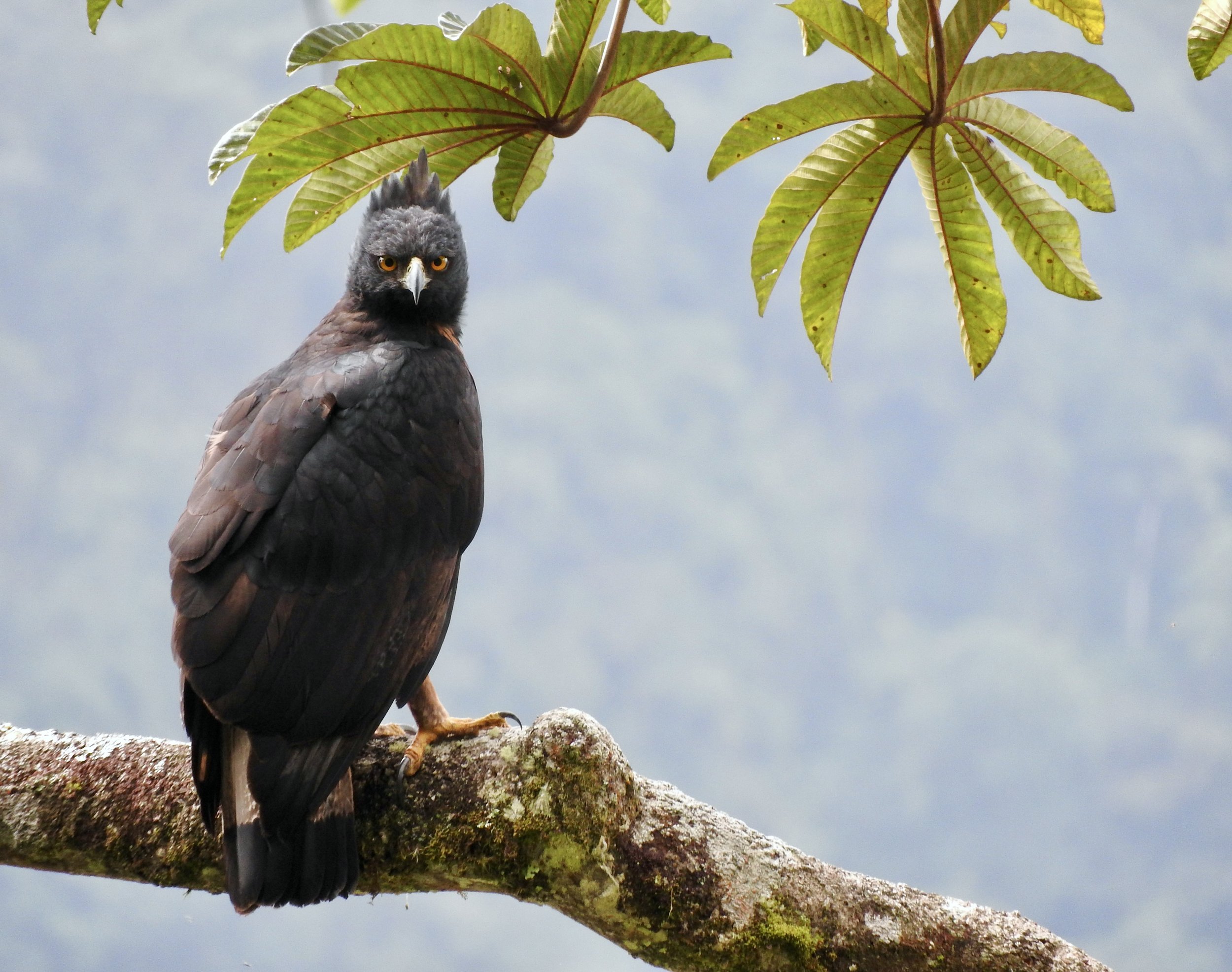In Search of the Perijá Parakeet
Both of our hosts, Chris and Diego, recently visited an amazing new spot for the endangered and little-known Perijá Parakeet. Read on for Chris’s story of the trip, and check out the Birders Show video above to see more of this stunning bird.
Sometime in December, I was casually scrolling through social media when a beautiful photo stopped me in my tracks. My Birders Show co-host, Diego, had just posted an image of a pair of colorful parakeets perched on a bare branch against a cloudless blue sky. I instantly recognized the bird as a species I had long wished to see: the Perijá Parakeet, a localized subspecies of the Painted Parakeet, restricted to the eponymous mountain range straddling the wild border between Colombia and Venezuela.
The Perijá Parakeet subspecies is endangered and, until very recently, was barely known in its range. I could find just a scattered handful of records on eBird, and even fewer photos. When I spoke to Diego, he was full of glowing praise for the site where he saw the birds: a beautiful house owned by a kind and welcoming family, and with the birds so close, you could practically touch them. It seemed that the “long-lost” Perijá Parakeet had, as with so many Colombian rarities, been hiding in plain sight all along. My birding wanderlust well and truly activated, I hastily arranged to visit the site.
Birding Fact: the term ‘subspecies’ refers to one of two or more populations living in different parts of a species’s range, and varying from one another by morphological characteristics. It is the taxonomic category that ranks below ‘species.’
The wonderful family at Finca No Hay Como Dios with a present from my Dad, a drawing of the Perijá Parakeet
So it was that I found myself in early January boarding a flight from Bogota to Valledupar, the capital city of the northeastern Colombian department of Cesar, and the staging point for trips into the Perijá Mountains. After an uneventful three-hour trip in a shared taxi from the airport to La Victoria de San Isidro, I met up with my local guide Andres from AgroTour Perijá. We jumped on the back of a couple of motorbikes and headed up into the mountains towering in the distance over the tiny town. The road up to the parakeet site is quite an experience on the back of a motorbike: extremely steep, winding, and rutted, but with stunning views out over the flatlands of Cesar and the distant Santa Marta Mountains. The snowcapped peaks of Colón and Bolívar, the highest coastal mountains on earth, glimmered faintly in the midday sun.
The view from a nearby house where we also spotted the parakeets. The snowcapped peaks of the Santa Marta Mountains are just visible in the distance.
After about 40-minutes (with a brief stop at a little roadside stall named Mi Ranchito for a cold beer), we arrived at the house. Finca No Hay Como Dios is a single-story roadside farm home to a friendly local family who has been living there for over 30 years. Perched on the edge of a ridge, with a steep ravine at its back, the house counts on privileged panoramic views and is surrounded by fruit trees, the perfect spot for the parakeets.
And it didn’t take long for us to strike it lucky. As I jumped off the bike to greet the owners, the parakeets called from the trees above the house. There’s no time like the present, so Andres and I grabbed our gear and headed up the dusty trail to the source of the commotion. Rounding a slight bend in the path, Andres pointed up ahead, and there was a group of a dozen Perijá Parakeets happily feasting on guava fruits just ahead of me.
The parakeets were incredibly relaxed and allowed me to approach to just a few meters
I could scarcely believe how relaxed the birds were. They were completely unbothered by our presence and allowed us to get within a few meters for jaw-dropping scope views and photos. Watching them as they dextrously maneuvered the fruits from their claws to their beaks, squabbled and scolded each other, and occasionally stopped for a quick preen, I was immediately struck by their rich color palette. The name Painted Parakeet was undoubtedly apt. Their rich maroon faces and bellies were beautifully complemented by flashes of electric cyan on their foreheads and napes and a striking white splotch daubed on their cheeks. They were, without doubt, the most handsome parakeets I had ever laid eyes upon.
Birding Fact: the Perijá (or Todd’s) Parakeet (Pyrrhura picta caeruleiceps) is considered by most taxonomic authorities to be a subspecies of the Painted Parakeet (Pyrrhura picta), along with the Sinú Parakeet (Pyrrhura picta subandina). The Sinú Parakeet is known only from northern Colombia, but there have been no confirmed records of it since 1949. You can see a video of our host Diego searching for the Sinú Parakeet here.
Andres has nicknamed the house “El Paraiso de las Pyrrhuras” (or ‘The Pyrrhura Parakeet Paradise’), and it certainly lived up to its lofty billing. Over the next couple of days, we enjoyed close-up views of the birds multiple times a day, usually at just a few meters distance and almost always as they were happily gorging on a wide array of fruits and seeds. Our routine went as follows: climb out of our hammocks at dawn, bird slowly along the road, wait for the parakeets to call, and then follow the noise to find the birds. It was delightfully laid-back birding.
And although the Perijá Parakeets were undoubtedly the stars of the show, there were plenty of other birds to keep us entertained: hulking great Military Macaws roaring overhead, a host of migrant warblers foraging in the shady coffee fields, and even an impossibly tiny Ferruginous Pygmy-Owl softly hooting from a roadside snag. So in a couple of lazy days of birding, I racked up 76 species, including three lifers.
[eBird Checklists from Finca “No Hay Como Dios” here and here]
A tiny Ferruginous Pygmy-Owl seen just next to the house. This little owl hooted constantly at dawn and dusk, and overnight.
The experience of exploring a lesser-known corner of Colombia while enjoying unparalleled views of one of the country’s least-known birds was a true privilege and one of the many reasons why I love birding in this country. After nearly ten years, it continues to surprise and delight me.
